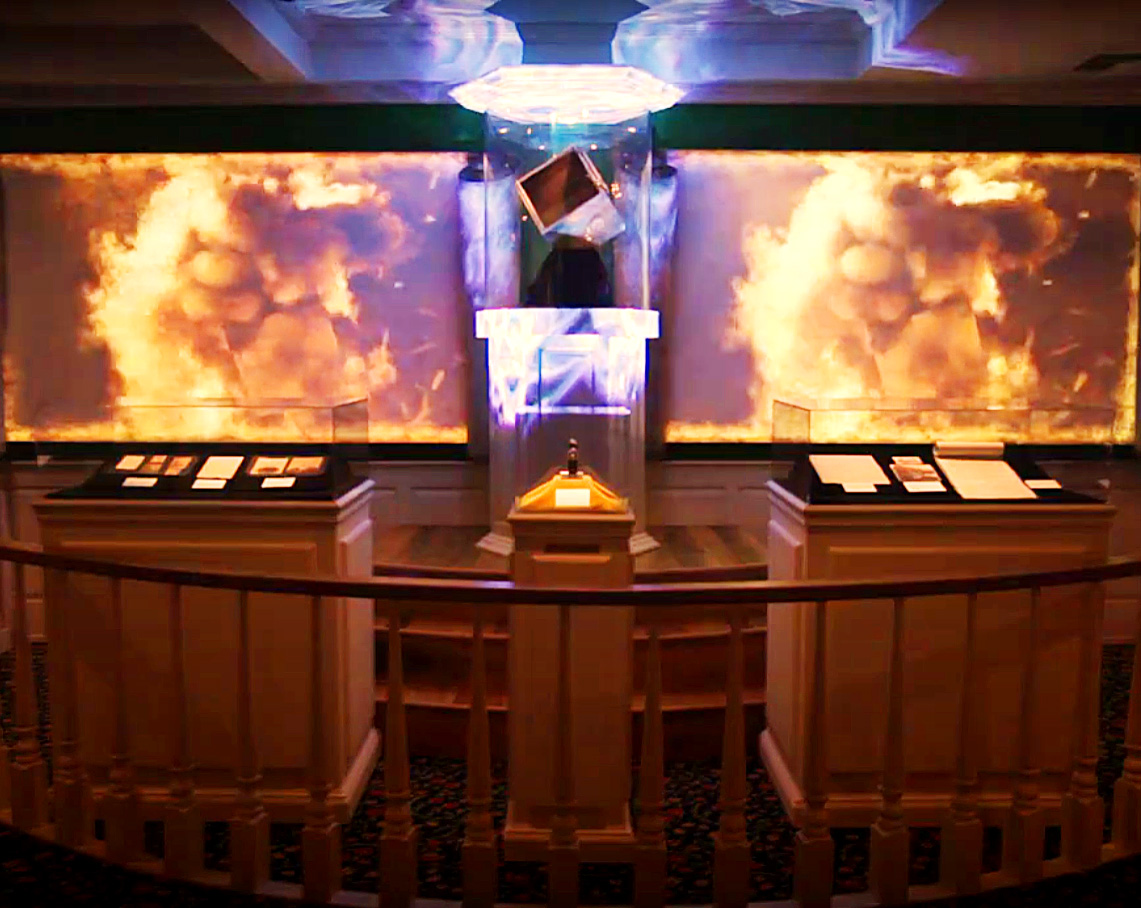While most museums exist to provide education and preservation, they must remain current and relevant with their audiences. With the rapid changes in technology over the past 50 years, museums can no longer afford to be passive experiences.
When it comes to how museum designs will evolve with the times, Stephen Lyons, owner of ci·ne·tique images and avid cinematographer with over thirty years of experience, has developed a keen sense of how museums, storytelling, and AVL technologies will mesh together in the future.
Here are three aspects regarding the future of museum design.
Blending Artifacts with Technology
For the longest time, museums were thought of as artifact-based experiences. Think of all those dimly lit rooms with glass cases containing dusty old books, remnants of stone engravings, urns and the occasional sarcophagus.
The technology we enjoy today simply did not exist or was beyond the reach of many budgets. Looking forward, we see a rise in technology in this artifact-dominated space. While artifacts will always be a part of the museum scene, they will be integrated with tech and large-scale AVL installations more and more to enhance their impact. Viewers will not only see the artifact, but they will also learn the context it played in the human story.

Practical applications of this might include talking portraits, holograms or video enactments that show the artifact’s role in history.

The Boston Tea Party Museum makes use of talking portraits to bring opposing points of view of the American Revolution to life, helping museum-goers understand the conflicts that occurred during the events of the late 18th century. Not everyone agreed that breaking away from the Empire was a good idea. In the past, that might have been explained on a 3x5 card in a glass display. Instead, the talking portraits bring the conflict to life in a surprising and memorable way. Adjacent to the display is one of the actual tea chests that were tossed into the harbor during the Boston Tea Party. When a visitor connects those artifacts to the story, it adds up to an experience that teaches more effectively because it makes an emotional connection with the people involved.

Blending spectacle and technology to create a learning experience at the ICR Discovery Center
COVID’S Impact on the Museum Experience
It goes without saying that COVID-19 has changed nearly every aspect of our lives including how we experience museums and other public spaces.
“Social distancing created a significant impact when it comes to museums,” Stephen notes. “If your flow of people is altered, and as a result, the flow to the design of a museum is altered, then you have to rethink how you present stories and information. It’s a ‘from the ground up’ level of reimagining.”
One key feature that museums have stumbled upon in the pandemic is the use of digital augmentation to traditional museum exhibits. Imagine a number of automated videos playing in a room that slowly shift to different screens automatically as a visitor moves through an exhibit.
This type of display frees up the space that physical exhibits would normally occupy. It also maintains the flow of a story while encouraging the visitor to move from one screen to the next as the story flows and “pushes” the information onward. This approach can encourage visitors to move through the space at a socially-distanced pace.
“Museum space is at a premium, now more than ever. That goes for floor space and space in the budget,” Stephen points out. “Digital enhancements to exhibits are more affordable, compact, and have the advantage of protecting the museums from decreased occupancy in the future. I think that peace of mind will create more and more demand for digital integration in the future.”
The Future Requires Teamwork
“Traditionally, the integration side of AVL teams and the content creation can be very disconnected,” Stephen says. “As a result, pieces are designed for ease of assembly and that results in bland design.”
MediaMerge’s approach is a model that is more focused on a close-knit team of experts that can draw off of each other’s expertise to create a better product for museums.
“On any other team Robert Letts, the exhibit designer for the American Village project, and I probably wouldn’t have ever spoken. But MediaMerge fosters an environment that encourages teammates to ask each other questions, and Robb and I managed to tackle a problem involving British soldier attire matching a specific time period for one of our exhibits, all because we worked closely together and knew we could collaborate. This gets you a better final project every single time. Other AVL integration teams have to catch up to that level for future projects, because things are only going to get more complex going forward.”